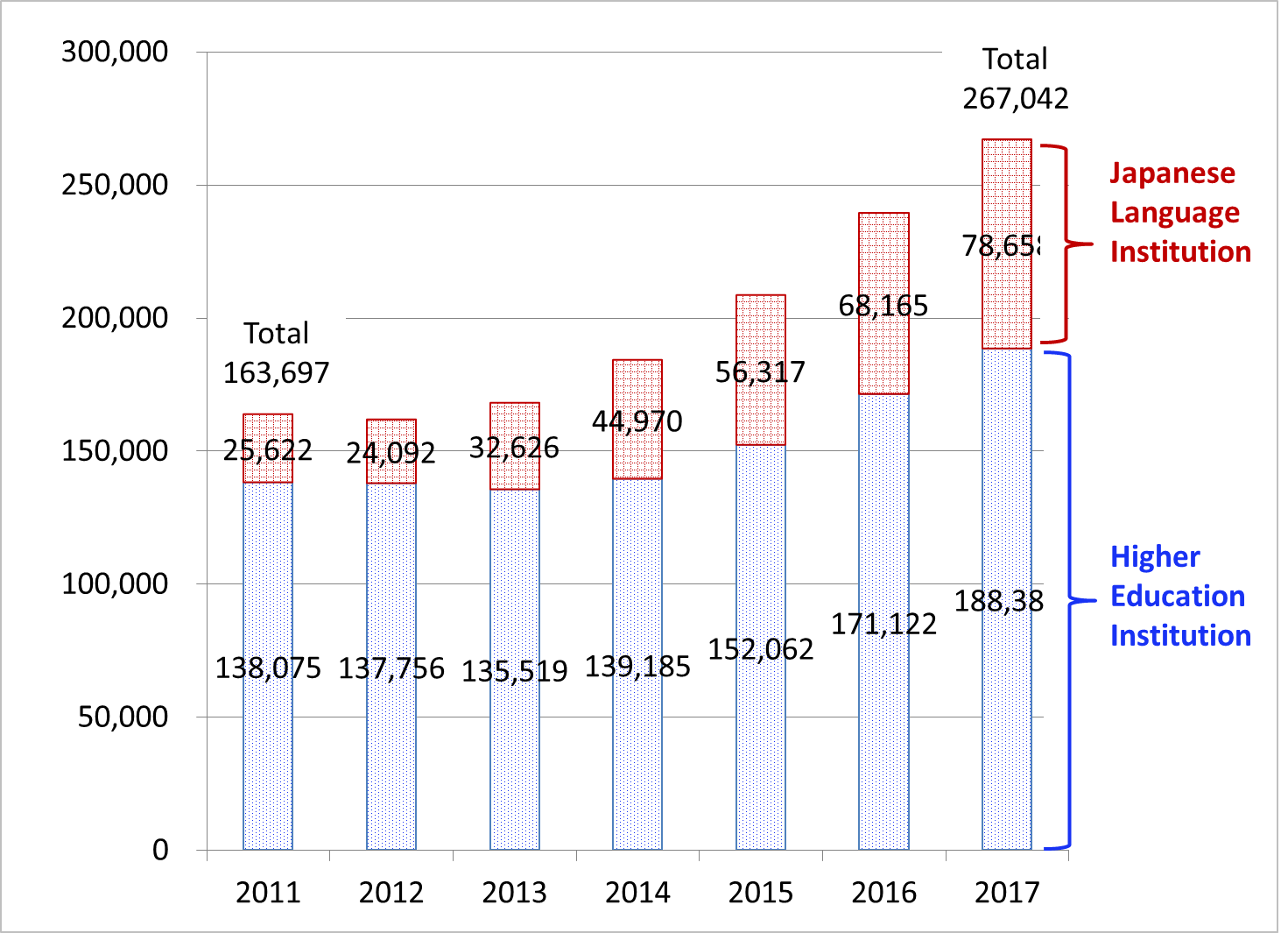Column Finance and the Social Security System 2018.04.04
【Aging, safety net and fiscal crisis in Japan】No.87: The Number of Foreign Students Is Increasing
In December 2017, the Japan Student Services Organization, which is an independent administrative agency of the government, announced statistics on foreign students. As shown in Figure 1, the number of foreign students has increased from 163,697 in 2011 to 267,042 in 2017. The total number of 267,042 comprises 188,384 students in higher education institutions and 78,658 students in Japanese language institutions.
The major higher education institutions in which foreigners are studying include graduate schools, universities, two-year junior colleges, and vocational schools. A vocational school is an institution that is established through the approval of prefectural governors based on the School Education Law and that conducts vocational training. Professional skills targeted by vocational schools include law, accounting, medical affairs, dental hygiene, information technology, electric technology, design, tourism business, and animation. High school graduation is required for vocational school entry. Vocational students who have studied two years at a vocational school can transfer to a university as a third-year student.
Table 2 shows the number of foreign students by type of higher education institution. It is important to prepare an environment for foreigners who have studied in Japan that will make them want to settle in Japan as a measure to combat the declining birthrate and aging population.

(Source)Japan Student Services Organization

